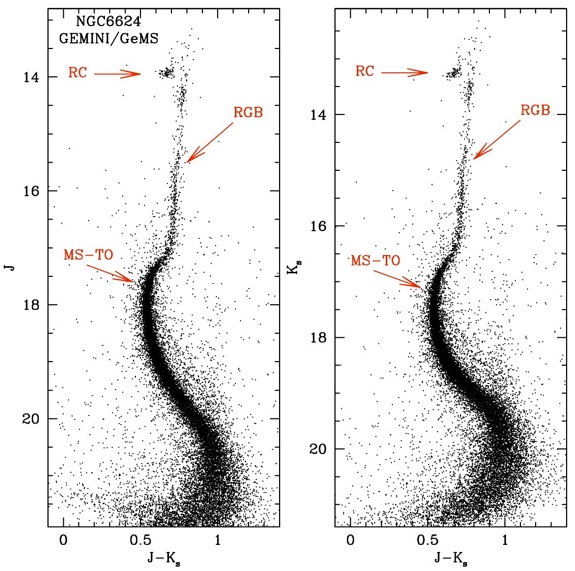A technical jewel named GeMS (derived from "Gemini Multi-conjugate adaptive optics System"), in combination with the powerful infrared camera Gemini South Adaptive Optics Imager (GSAOI), was finally able to penetrate the dense fog surrounding Liller 1 and to provide astronomers with an unprecedented view of its stars. This has been made possible thanks to the combination of two specific characteristics of GeMS: first, the capability of operating at near-infrared wavelengths (especially in the K pass-band); second, an innovative and revolutionary way to remove the distortions (blurriness) that the Earth's turbulent atmosphere inflicts on astronomical images. To compensate for the degradation effects of the Earth atmosphere, the GeMS system uses three natural guide stars, a constellation of five laser guide stars and multiple deformable mirrors (see www.gemini.edu/node/11925 for a detailed description of the technology used by GeMS). The correction is so good that astronomers are provided with images of unprecedented sharpness. In the best K-band exposures of Liller 1, stellar images have an angular dimension of only 75 milli-arcseconds, just slightly larger than the theoretical limit of Gemini's 8-meter mirror (diffraction limit). This means that GeMS performed an almost perfect correction of the atmospheric distortions.
These images turned out to be comparable in sharpness with those of the Hubble Space Telescope at infrared wavelengths, with two big additional advantages: (1) the access to the K pass-band, which is the most insensitive to dust extinction and which is not available at HST, (2) a much larger collecting area (a mirror of 8m diameter at the Gemini Observatory Telescope in Chile, against a 2m mirror on board the Hubble Space Telescope).
Indeed, the GeMS observations of Liller 1 show that adaptive optics systems mounted on ground-based 8m telescopes can provide space-like clarity images and demonstrate the remarkable potentiality of this instrument in the exploration of the Galactic Bulge.











